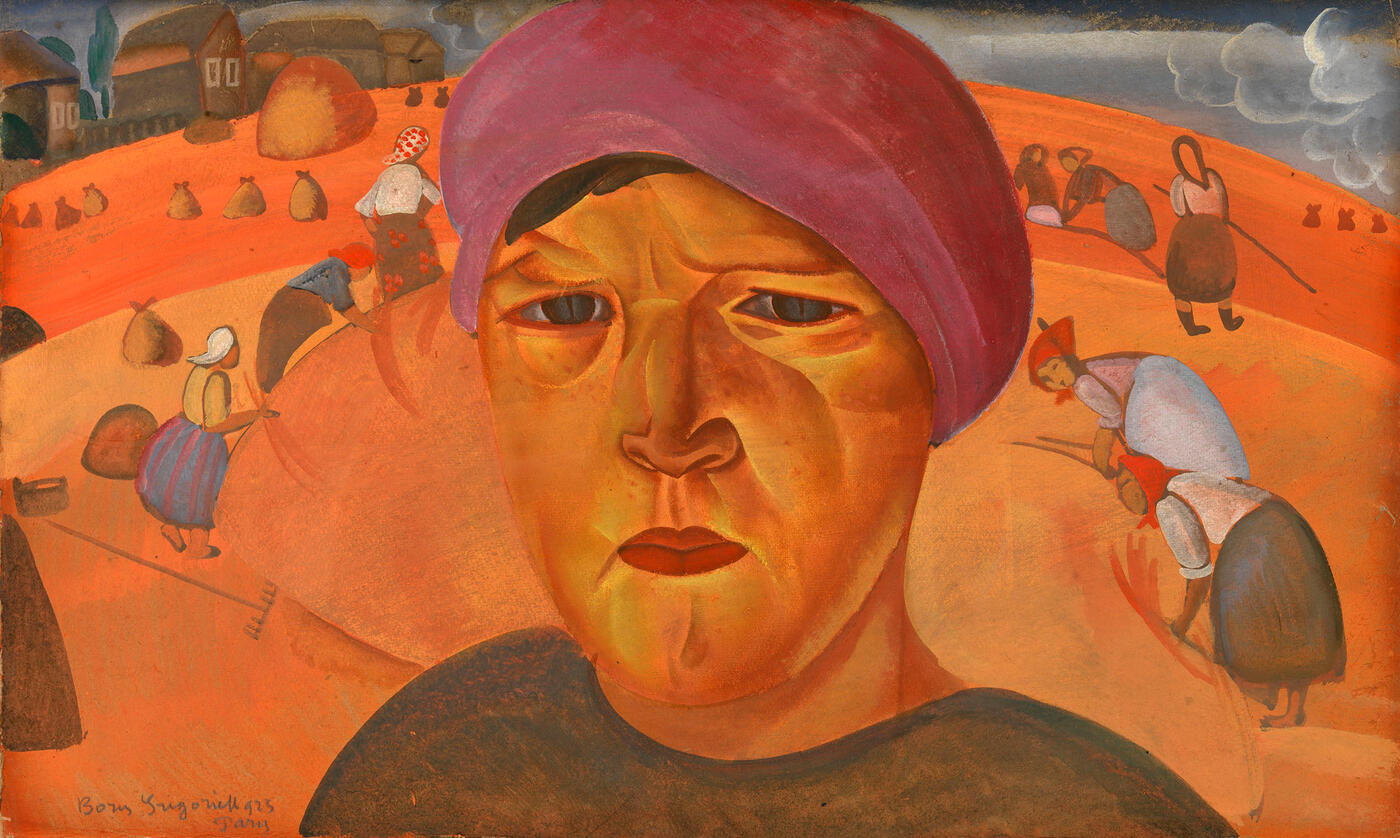3 June 2015 Russian Art Auctions
3 June 2015

85. GRIGORIEV, BORIS (1886-1939)
Russian Peasant Woman, from the series "Visages de Russie", signed, inscribed "Paris" and dated 1923, also further signed, inscribed "chère Madame Atwater de son ami Boris Grigorieff New York" and numbered "18" on the reverse.
Pencil, watercolour and gouache on cardboard, 37.5 by 62 cm.
200,000-300,000 GBP
Provenance: A gift from the artist to Adeline Atwater, a renowned writer, art dealer and women's rights activist, New York, c. 1924 (inscription on the reverse).
Private collection, USA, from c. 1975.
Russian Paintings and Works of Art, Christie’s New York, 18 April 2007, lot 70.
Acquired at the above sale by the present owner.
Private collection, UK.
Exhibited: Paintings and Drawings by Boris Grigoriev, New Gallery, New York, 18 November–15 December 1923, No. 19 (label on the reverse).
Exhibition of Paintings by Boris Grigoriev, Worcester Art Museum, Worcester, 4 January–3 February 1924, No. 35.
Literature: Exhibition catalogue, C. Brinton, Paintings and Drawings by Boris Grigoriev, New York, New Gallery, 1923, No. 19.
Exhibition catalogue, C. Brinton, Exhibition of Paintings by Boris Grigoriev, Worcester, Worcester Art Museum, 1924, No. 35, listed as Russkaya krestianka. Liki Rossii.
Russian Peasant Woman belongs to the cycle Visages de Russie, an incredibly significant part of Boris Grigoriev’s oeuvre, which he painted in Paris between 1922 and 1924. It is a logical continuation of the well-known series of pictures and drawings entitled Raseya (1917–1921), – an old misspelling of Russia – begun in Russia and completed after he had emigrated. This picture in particular is based on one of the best pencil drawings in the cycle (the artist was known as a brilliant draughtsman and “magician of line”), which was reproduced in every edition of the accompanying book (Petrograd, 1918; Berlin, 1921; Berlin, 1922). Like all Raseya drawings of 1917–1918, the young peasant woman in a headscarf was drawn from life, and the portraiture is acutely individual. Grigoriev used the drawing for the central half-length figure of the peasant woman in his 1918 painting Peasant Earth (The State Russian Museum). Three years later, he introduced the image of the young peasant woman in a headscarf into the group of characters in the eponymous painting from the Visages de Russie cycle (1921, Palace of Congresses, St Petersburg).
When Grigoriev painted Russian Peasant Woman in Paris in 1923, he was working intensely on the cycle, which, apart from images of peasants, also included a suite of portraits of actors at the Moscow Arts Theatre, painted when the company was on tour in Paris. In Russian Peasant Woman he allows the cardboard colour of the support to show through the paint layer, or simply leaves it untouched, thus adding another colour to his palette. In general, however, the palette is bright and sunny, with orange, crimson and pale blue prevailing – all colours that the artist loved. The work is also very typical of this period in Grigoriev’s artistic career by virtue of its slightly Cubist character, which lends sharpness to the Neoclassical forms of his painting. The specific image represented in the painting acquires a certain timelessness and symbolic quality through the spherical perspective. The rounded shapes and lines create a sense of completeness of the earth’s hemisphere, against which background the woman’s head appears powerful and monumental.
In the autumn of 1923, the work was shown at Boris Grigoriev’s second solo exhibition in New York. Afterwards, almost the whole exhibition was shifted to Worcester, where it was shown at the local museum. After the exhibitions, the artist gave the painting to Adeline Atwater, director of New Gallery, who had helped him for many years with the promotion of his work on the American art market. 1923 was a successful year for Grigoriev – he sold seven paintings and ten drawings through New Gallery (the best figures for any of their represented artists).
Dr Tamara Galeeva, art historian
Notes on symbols:
* Indicates 5% Import Duty Charge applies.
Ω Indicates 20% Import Duty Charge applies.
§ Indicates Artist's Resale Right applies.
† Indicates Standard VAT scheme applies, and the rate of 20% VAT will be charged on both hammer price and premium.